The Galapagos Islands have always held a massive appeal for me and despite spending such a huge portion of my budget on my other dream (and bank-breaking) destination of Antarctica, I managed to scrape together enough pennies to take myself on yet another trip of a lifetime within the same stint away from home. The work of Charles Darwin is of great interest to me, and ever since I went to the exhibition at the Natural History Museum in London over a year ago, I was determined that I would get myself over here at some point soon – well, here I am!
Having departed Montañita at the crack of dawn in order to catch a bus to Guyaquil, I made it to the airport in time to buy a flight ticket and get myself on a plane to Baltra Airport to start my Galapagos adventure. As ever I had not made any prior arrangements for flights, accommodation, or a boat trip which meant once again it was all spontaneous last minute booking. Whilst I was waiting for the baggage reclaim at Baltra to open I saw lots of company representatives waving name boards for passengers to be collected and I started to wonder if I would be able to find space on a boat, as there seemed to be an awful lot of tourists flooding into the airport. One particular rep caught my eye (probably because he was young, male and not unattractive), and despite looking Ecuadorian he asked me in an American accent whether I was boarding a particular boat whose name I could not recall by the time I arrived in Puerto Ayora on Santa Cruz Island to find a travel agency and gauge my options.
Not sure where I should get off the bus, I jumped off at a spot that looked like it was the port as this is usually the place to get boat deals at their cheapest.
The first agency I went into was not very helpful, so I wandered down the road and found another and told the man inside I was looking for a boat trip that went to both Isabela and Española islands as these were the two I was particularly interested in visiting. This agency was a lot more helpful and after talking to one guy for a while in Spanish about my various options, the woman who could speak English became free. However, I had already made my decision on which boat I wanted to take – La Samba. It was a little bit out of my price range, but I knew I was getting a great deal so I managed to push my budget a little bit higher by getting a cash advance on my credit card from the bank as there is a restriction on withdrawals from the ATM. I can say that the extra money I sacrificed on this boat was definitely worth it and having seen some of the other groups at various stages during my trip I am incredibly glad that I opted for the Samba.
The Samba was not due to leave Puerto Ayora until the following evening, so I found a hotel and got myself a fairly early night after a little wander around the streets of the small town. I found a bunch of fishermen gutting, skinning and chopping up the fish they had caught that day. All around them were pelicans waiting for the opportunity to swoop in and steal whatever they could. At one point I saw one fly up onto the work surface and quickly grab and swallow a fish head as well as the cloth that the fishermen had been using to clean the area after themselves, a nice balanced diet.
In the morning I went to Tortuga Bay which is a 3km walk out of town to a really nice beach, apparently filled with wildlife. I set off on the simple route to the bay and found it was actually a little further than I had anticipated as it is a 3km walk to the bay after you reach the visitors' sign in area which is about 1.5km out of town already.
It was all worth it though to feel the unbelievably fine and soft white sand between my toes as the waves of the ocean crashed around me. In terms of flora and fauna the most interesting things I saw were actually on the path to/from the bay. I saw many lava lizards darting to and fro across the path, almost as if they were playing dare-devil as to whether the blonde giant would crush them under her feet. I also saw cacti growing in the form of trees, something which only exists on the Galapagos Islands and looks really bizarre at first sight.
I had planned to go to the Charles Darwin Research Centre to see the old giant Tortoise "Lonely George" after my visit Tortuga Bay, but by the time I got back to town it was almost time for me to meet up with the Samba for lunch before an afternoon in the highlands of Santa Cruz Islands. I met up with my guide (Juan) at the port and along with two Finnish guys and a British couple we joined the Samba as new additions;
the other guests had all started on their journey from the airport the previous day, and they had actually been to the Charles Darwin Research Centre that morning, so had I gone I would've met them all earlier. The group consisted of 12 people in total and everyone was very nice. As expected many of them were of retirement age, but with the new additions there was a surprisingly high percentage of under-40s amongst us, making the group seem quite young compared to what I found on my Antarctica boat! I was still the youngest guest, but my cabin-mate Jacky was only 27 and we got on like a house on fire which was good news.
After a scrumptious lunch which left me feeling like I was going to be getting fed well for the next week, we headed back on shore to go and discover the highlands of Santa Cruz Island. The older Galapagos islands no longer have highlands as they have flattened out,
but Santa Cruz is at an interesting stage to view, as it is old enough to have developed a lot of plant life and is one of the greenest places I've ever been to in my life, so it is nice to get some height and view this amazing island from a vantage point. As we approached the top of the island there was an overwhelming smell of passion fruit, which is one of my favourite smells. However Juan informed us that passion fruit is an introduced species to Galapagos and as the trees grow very invasively it is something they are currently trying to rid the islands of – a task made very difficult by the fact that tortoises love to eat the fruit, and act as a very efficient distributor of the seeds.
Throughout the highlands tour we were educated on so many things to do with the plant life in Galapagos that my head was starting to spin; Juan is like a walking encyclopaedia on all things to do with the islands and anything vaguely related, it is really quite impressive.
In addition to this that his English is perfect, so I cannot imagine having wished for a better guide; and despite having an American accent, he has a much better vocabulary and is far more eloquent than any American I have ever met! But all this plant-talk, together with my lack-of-wildlife experience at Tortuga Bay, did leave me wondering whether the much talked about abundance of wildlife in the Galapagos Islands was purely a myth. However, before long we drove past a small field which had a lone tortoise munching away on its contents. I was very excited – my first Galapagos giant tortoise. It was a female and she was not timid at all, so we could stand nearby and observe her munching away for ages. Meanwhile Juan gave us the answers to any questions anyone may have ever had about tortoises. Shortly after this, we saw a male and a juvenile drinking from a pond, as well as a couple of others roaming around in the general area... I was a happy girl.
The highlands tour was rounded off with a trip to some the lava tunnels, which was very much like venturing into a cave.
Juan's wealth of knowledge continued to impress us all, as we received a crash course in lava flows and geology in general – I started to wonder how any one person can know so much, and it was still only the first day! The lava tunnels were really interesting to walk through, and provided a stark contrast to the vividly green landscape just a couple of meters above our heads. After a hard afternoon of learning, we headed back to the Samba for yet another great meal before everyone got a fairly early night, ready for the succession of early mornings that lay ahead.
The following day was the one to be spent on Isla Española – the island that I had heard so many great things about and wanted to be sure was included on my itinerary. The early start meant that we hit the soft white-sanded beach at Gardner Bay before any other group had even opened their eyes for the day. This particular beach was full of sea lions returning from their morning fishing and taking a well-earned rest, whilst the curious juvenile sea lions came up for a closer look at the new arrivals to their beach.
We had at least an hour completely uninterrupted by any other tourists, and when they did arrive we hardly saw them as they were in and out so quickly – another reason I was glad I had opted for the Samba.
At the opposite end of the beach to all the sea lions we saw a sea turtle nest and tracks, as we were duly educated on all things sea turtle related, before spotting a couple swimming out at sea. There was also a large group of rocks where I saw my first marine iguanas, who were resting in the sun trying to warm up after a feeding session out in the very cold water. Amongst the marine iguanas were a few brightly coloured crabs scurrying around in the rocks, and pelican flew overhead... I was in wildlife paradise! Before heading back to the Samba everyone joined the sea turtles, sea lions and marine iguanas for a dip in the water – it was very cold, but beautifully refreshing and it soon warmed up and was very pleasant.
Before lunch we had our first snorkelling session, for which I gladly put on my 32mm full length wetsuit. This was an incredible experience as we saw sea turtles feeding and resting, as well as lots of brightly coloured fish which we were able to swim amongst by diving down just a short way – I was amazed at how much I could see with just a mask and snorkel rather than going scuba diving. However, the highlight for me was playing with the baby sea lions. There were five of them in total who were so much fun to swim around with, dive down with as we chased each other all over the place. I had such a great work out, and it reminded me very much of the time I went swimming with the dolphins in the cold waters off the north of New Zealand - exerting so much energy really helps to generate much-needed heat when in those conditions!
Such an amazing morning left me feeling that the rest of the day could not possibly get any better... how wrong was I?! Isla Española is absolutely packed with all types of birds, including two species I was very keen to see – waved albatrosses and blue-footed boobies. We headed to Punta Suárez where we watched a group of sea lions surfing in the waves before heading in land to see the birds. Before long we came across some blue-footed boobies and witnessed the entire mating ritual which was fascinating. The male attracts a female by whistling and doing a little dance before they dance together for a while, she then bends over and he mounts her for all of three seconds, then they dance once more to seal the deal. There was one poor lonely male on a nearby rock dancing and whistling away, but nobody seemed interested... Juan insisted that this one was interested in me and I should remove my sunglasses to show him my eyes, however despite his brilliantly blue feet I was not drawn to his mating call for some reason!
After around a two mile walk around this part of the island we reached the waved albatross colony at the top of the breathtaking cliffs. Española is the oldest of the Galapagos Islands and is the only one that has been around long enough to develop such cliffs; therefore this is the only location where the albatrosses can nest, as they need the cliffs to be able to take off – something that is truly great to watch. Here we witnessed more mating activity: the dance of the albatross is a more pendulumesque movement of the neck rather than the lifting of the feet by the boobies, and it is just as fascinating. The cliffs are also frequented by red-billed tropic birds, swallow-tailed gulls, Galapagos hawks, blue-footed boobies and Nazca boobies, each with their own unique behaviours. I am not normally that into birds, but this was a truly magnificent afternoon on an amazing island.
The following day we visited Isla Floreana and I was not feeling too great, so I missed the afternoon's activities. I did however make it out to the beach with green sand in the morning, as well as the leisurely walk across volcanic ash path with painted locusts, and past a brackish lagoon in search of flamingos. Over the other side of the island was a white sand beach where we saw diamond rays and sharks in the sea right by the shore line as we paddled out to take a closer look. I also managed a quick snorkel before my body gave up on me. It was all worth it though as I got to see penguins speeding past like little torpedoes, blue-footed boobies diving below the surface, a large group of stunning eagle rays, white tip sharks and more sea turtles.
Apart from Española, the other island I was very keen to visit was Isla Isabela. Our morning began with us finding a group of golden rays out for an early morning swim,
as well as also seeing a few eagle rays in the same area. The views that we had of them were amazing, well worth getting up early for! Once we reached the island we began our walk over the lava which still does not have much in the way of vegetation apart from around the various flamingo-filled lagoons and ponds. It was such a stark landscape, and very different to anywhere else I have ever been before. In one of the ponds we saw a collection of sea turtles, including a variety of migrants from Hawaii and Australia rather than just the Galapagos sea turtles that we had seen previously. En-route back to the Samba we saw a large group of marine iguanas basking and a few penguins drying out on the rocks before returning to their fishing.
By this point both Jacky and I were feeling really rough and were going to opt out of the morning’s snorkel until Juan told us we would regret it for the rest of our lives if we did not go! Convinced by Juan’s huge excitement and the fact that he was taking his camera, we went along. Not only was the water warmer than the freezing cold seas we had previously experienced, this was by far the most incredible snorkelling experience I have ever had.
We swam into a small area that is inhabited by sea turtles and were surrounded by 15-20 of them as they came nose to nose with us, and swam directly underneath our astounded floating bodies. Watch the video here.
After an absolutely mind-blowing morning we had a dingy ride around the mangroves in the afternoon. Looking at the mangroves and plant life itself was very interesting, especially when we saw some sea lions resting in one of the trees! The mangroves are full of a wide variety of bird life, all of which are absolutely stunning – everything here in the Galapagos is so beautiful. We also saw many more turtles feeding on the mangrove seedlings and swimming very close to our boats. Without doubt, this will go down as my most turtle-filled day ever!
We continued with our exploration of Isla Isabela the following day as we landed on the black sand beach at Urbina Bay. This area is home to the huge land iguanas that the Galapagos are famous for. Throughout the morning we witness all kinds of behaviours from these incredible animals, from a male displaying to his mate and asserting his territory, to basking in the sun, to digging a burrow. I had been looking forward to observing the giant land iguanas and they did not disappoint at all. Before heading back to the boat it was time for another swim in the waters cold enough to be shared with the penguins, as they bobbed around amongst the excited tourists.
In the afternoon we visited Punta Espinoza on Isla Fernandina, home to many many many marine iguanas, including lots of baby marine iguanas at this time of year, and therefore prime hunting territory. In the few hours that we were there we saw a Galapagos racer snaking its way through the mounds of marine iguanas looking for baby iguanas as the lava lizards looked on nervously. It was incredible to watch him hunt, although his efforts were fruitless on that occasion.
However we did see a couple of successful hunters devouring their prey as both a Galapagos hawk and a heron caught baby iguanas. The hawk set his meal down on the floor between his talons and ripped it apart until he had eat it all, whereas the heron held his in his beak before getting it in the right position to swallow whole. The fact that we got to see all this action in the space of one morning really shows that it is worth sitting, waiting and observing, rather than just traipsing through taking photos of everything like so many other groups seemed to be doing. As well as all this hunting action, we also sat and watched some flightless cormorants building a nest, whilst crabs swarmed around our feet and curious seals came to see what we were up to.
Back aboard the Samba I got chatting to the Captain, the first time I had really practiced my Spanish since setting off to sea. He invited me to come and drive the boat, so I spent about an hour sailing in pretty much a straight line and enjoying abusing the horn! We were due to be crossing the Equator a couple of hours later, but unfortunately I was not allowed to be in charge of the boat at this point. In any event I started feeling really seasick after my time as "La Capitana", so I went to lie down and was dragged up on deck for the Equator-crossing ceremony where there was a “Galapagos... something” fancy dress theme, and we all had to kiss a fish Juan (dressed as Neptune) presented to us on a silver platter. As I was not feeling great at all my fancy dress efforts were not too inspired as I came as a “Galapagos Guide” and Jacky was my “Galapagos Tourist”.
More creative outfits included a couple of sea lions, a turtle, a blue-footed booby and a frigate bird. We celebrated as we crossed from the southern hemisphere into the northern hemisphere with a very nice cocktail, as the boat slowed right down and my seasickness subsided.
The following day was our final full day, and as always we were woken up bright and early to make the most of our time. The morning consisted of a walk along the coastline at Puerto Egas on Isla Santiago, where we saw our first fur sea lion... similar to the other sea lions we had seen, but they were bigger and more bear-like, with a lot more fur. We also took a walk over the algae-covered rocks amongst the marine iguanas, and took a closer look at many different primitive sea creatures, which were really interesting.
As we reached Isla Bartolome it was our last chance to go snorkelling. We were dropped off at a point that was absolutely covered with the most amazing sea stars I have ever seen, and as the water was so shallow their colours were brilliantly visible. As well as a variety of stunning fish, we also got to watch a lone penguin fishing for a really long time. The water here was so clear that we were also able to take a really detailed look at the lava composition of the walls of the island. In the afternoon we ventured onto the island itself and climbed up to the top for a breath-taking view of the Galapagos Islands; this is a view that will remain in my memory forever.
To round off our Galapagos experience we headed out on a very early dingy ride on the final morning. This was well worth waking up for as we watched the sun rise as pelican fished all around us. Then, one of the most incredible things I’ve ever witnessed in my life happened, cementing the blue-footed boobies as my favourite of all the Galapgos animals. They arrived en-masse to fish in a group of over 1,000 birds, all diving simultaneously like daggers into the water, making a cacophonic crash, as we all watched with our jaws hitting the floor of the boat.
It doesn’t really do it justice, but I made a short video to give you an idea. I could have sat and watched them dominate the fish all day, but the supplies of food dwindled and it was time for us to head back to the boat to get everyone to the airport for flights back to the mainland.
As soon as we arrived back to the airport and I saw Juan with his “Samba” sign ready for the next lucky group, I realised he was the guy who had spoken to me when I arrived one week earlier! I was so happy with my choice of boat, even though it was a little out of my price range it was totally worth splashing out after I saw how so many of the other groups conducted themselves. I learnt so much about so many things, and I am still amazed at Juan´s knowledge, passion and enthusiasm for everything in and around these islands. This was a trip of a lifetime for me, but I really hope that it is not a “once in a lifetime” trip as I would love to return here one day and see how things have evolved.
For anyone who wants to view extra Galapagos pictures, the full highlights can be found here.
El origen de las especies
Tuesday, June 15, 2010
 Galapagos Islands, Galápagos, Ecuador
Galapagos Islands, Galápagos, Ecuador
Other Entries
-
34Buenos Aires otra vez
Mar 01106 days prior Buenos Aires, Argentinaphoto_camera7videocam 0comment 7
Buenos Aires, Argentinaphoto_camera7videocam 0comment 7 -
35Muchas iglesias y colas, pero no mucho más
Mar 05102 days prior Cordoba, Argentinaphoto_camera13videocam 0comment 16
Cordoba, Argentinaphoto_camera13videocam 0comment 16 -
36Pocas más iglesias y un río lento en Tucumán
Mar 0899 days prior Tucuman, Argentinaphoto_camera7videocam 0comment 8
Tucuman, Argentinaphoto_camera7videocam 0comment 8 -
37Vicki a las nubes
Mar 1394 days prior Salta, Argentinaphoto_camera32videocam 0comment 11
Salta, Argentinaphoto_camera32videocam 0comment 11 -
38Una frontera fácil y uno hermoso paseo del tren
Mar 1592 days prior Tupiza, Boliviaphoto_camera5videocam 0comment 5
Tupiza, Boliviaphoto_camera5videocam 0comment 5 -
39Tanto sal no puede ser buena para su salud
Mar 2087 days prior Uyuni, Boliviaphoto_camera21videocam 0comment 14
Uyuni, Boliviaphoto_camera21videocam 0comment 14 -
40Si amas dinamita y plata, vas a Potosi
Mar 2285 days prior Potosi, Boliviaphoto_camera12videocam 0comment 14
Potosi, Boliviaphoto_camera12videocam 0comment 14 -
41Huelo muchos concursos en el aire (que falta)
Apr 0868 days prior La Paz, Boliviaphoto_camera20videocam 0comment 11
La Paz, Boliviaphoto_camera20videocam 0comment 11 -
42Hay abundancia más trucha en el lago
Apr 0967 days prior Isla del Sol, Boliviaphoto_camera9videocam 0comment 6
Isla del Sol, Boliviaphoto_camera9videocam 0comment 6 -
43Caña para todas las cosas
Apr 1363 days prior Puno, Peruphoto_camera10videocam 0comment 7
Puno, Peruphoto_camera10videocam 0comment 7 -
44Una ciudad blanca y un cañón muy verde
Apr 1759 days prior Arequipa, Peruphoto_camera19videocam 0comment 6
Arequipa, Peruphoto_camera19videocam 0comment 6 -
45Mucho caminando, muchas escaleras - vale la pena
Apr 3046 days prior Cusco, Peruphoto_camera27videocam 0comment 10
Cusco, Peruphoto_camera27videocam 0comment 10 -
46¿Quién hizo estas líneas?
May 0145 days prior Nasca, Peruphoto_camera8videocam 0comment 4
Nasca, Peruphoto_camera8videocam 0comment 4 -
47Mucha arena en mi cara
May 0541 days prior Huacachina, Peruphoto_camera19videocam 0comment 7
Huacachina, Peruphoto_camera19videocam 0comment 7 -
48A pesar del cielo gris, tenia que quedar en Lima
May 0937 days prior Lima, Peruphoto_camera3videocam 0comment 7
Lima, Peruphoto_camera3videocam 0comment 7 -
49Trabajando duro y jugando más duro en Máncora
Jun 0213 days prior Mancora, Peruphoto_camera15videocam 0comment 4
Mancora, Peruphoto_camera15videocam 0comment 4 -
50Quizá con un poco sol Montañita puede ser mejor
Jun 087 days prior Montañita, Ecuadorphoto_camera4videocam 0comment 2
Montañita, Ecuadorphoto_camera4videocam 0comment 2 -
51El origen de las especies
Jun 15 Galapagos Islands, Ecuadorphoto_camera41videocam 0comment 10
Galapagos Islands, Ecuadorphoto_camera41videocam 0comment 10 -
52Muchas aguas en Baños
Jun 2510 days later Banos, Ecuadorphoto_camera14videocam 0comment 3
Banos, Ecuadorphoto_camera14videocam 0comment 3 -
53Oigan chicos, me gustan muchos sus gallos!
Jun 2712 days later Otavalo, Ecuadorphoto_camera14videocam 0comment 5
Otavalo, Ecuadorphoto_camera14videocam 0comment 5 -
54Fui a la Mitad Del Mundo
Jun 3015 days later Quito, Ecuadorphoto_camera22videocam 0comment 2
Quito, Ecuadorphoto_camera22videocam 0comment 2 -
55Pechos y culos falsos, cocaína y la lluvia
Jul 0520 days later Medellin, Colombiaphoto_camera9videocam 0comment 5
Medellin, Colombiaphoto_camera9videocam 0comment 5 -
56El mejor café para el resto del mundo
Jul 0823 days later Manizales, Colombiaphoto_camera8videocam 0comment 3
Manizales, Colombiaphoto_camera8videocam 0comment 3 -
57No sólo para el valiente
Jul 1025 days later Bogota, Colombiaphoto_camera11videocam 0comment 5
Bogota, Colombiaphoto_camera11videocam 0comment 5 -
58En búsqueda de la playa de mis sueños
Jul 2338 days later Taganga, Colombiaphoto_camera22videocam 0comment 2
Taganga, Colombiaphoto_camera22videocam 0comment 2 -
59Infierno de las arañas y lancha por paraíso Caribe
Jul 2944 days later Capurgana, Colombiaphoto_camera18videocam 0comment 9
Capurgana, Colombiaphoto_camera18videocam 0comment 9 -
60La ultima parada en un continente encantador
Aug 0551 days later Cartagena, Colombiaphoto_camera13videocam 0comment 1
Cartagena, Colombiaphoto_camera13videocam 0comment 1 -
61El paraíso recobrado
Aug 0955 days later San Blas, Panamaphoto_camera20videocam 0comment 2
San Blas, Panamaphoto_camera20videocam 0comment 2 -
62Es sólo un canal grande y maloliente
Aug 1662 days later Panama City, Panamaphoto_camera7videocam 0comment 3
Panama City, Panamaphoto_camera7videocam 0comment 3 -
63Aventuras con cuerdas
Aug 2066 days later Boquete, Panamaphoto_camera6videocam 0comment 4
Boquete, Panamaphoto_camera6videocam 0comment 4 -
64Bastante fiestas, pero dónde están las olas?
Aug 2571 days later Bocas del Toro, Panamaphoto_camera8videocam 0comment 10
Bocas del Toro, Panamaphoto_camera8videocam 0comment 10 -
65Finalmente estoy viviendo un sueño de mi infancia
Aug 3177 days later Puerto Viejo, Costa Ricaphoto_camera3videocam 0comment 1
Puerto Viejo, Costa Ricaphoto_camera3videocam 0comment 1 -
66Quisiera ser una lagarta muy grande
Sep 0279 days later Manuel Antonio National Park, Costa Ricaphoto_camera7videocam 0comment 2
Manuel Antonio National Park, Costa Ricaphoto_camera7videocam 0comment 2 -
67Esperando a la lava... y todavía estoy esperando
Sep 0683 days later La Fortuna, Costa Ricaphoto_camera7videocam 0comment 1
La Fortuna, Costa Ricaphoto_camera7videocam 0comment 1 -
68Casi relajante en la playa
Sep 1188 days later San Juan del Sur, Nicaraguaphoto_camera3videocam 0comment 1
San Juan del Sur, Nicaraguaphoto_camera3videocam 0comment 1 -
69Cuando los sueños pueden ser las pesadillas
Sep 1289 days later Ometepe Island, Nicaraguaphoto_camera4videocam 0comment 3
Ometepe Island, Nicaraguaphoto_camera4videocam 0comment 3
Comments
2025-05-23
Comment code: Ask author if the code is blank

 Galapagos Islands, Galápagos, Ecuador
Galapagos Islands, Galápagos, Ecuador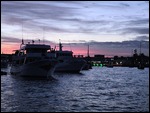

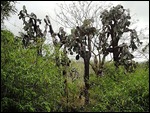
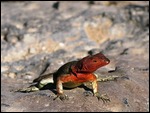

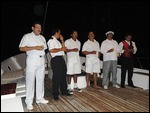
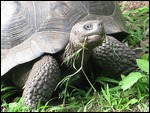
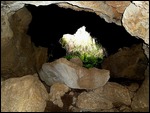
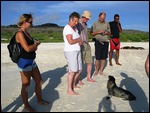
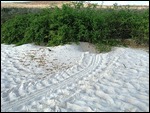
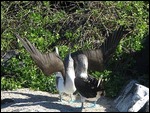
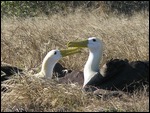
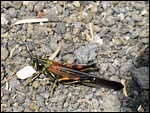
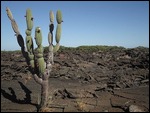
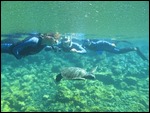
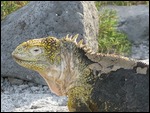
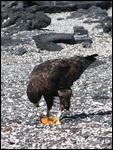
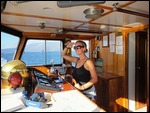

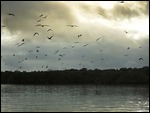








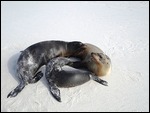
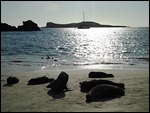
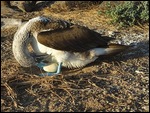

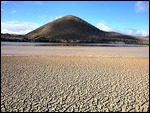

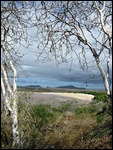
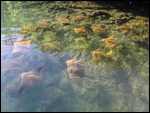
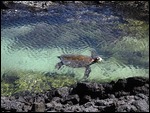
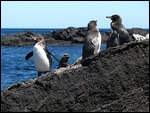
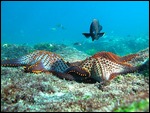

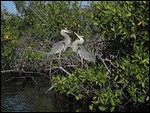
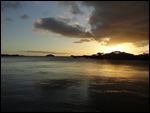
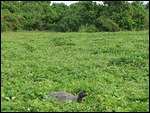
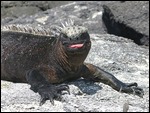
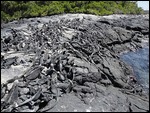
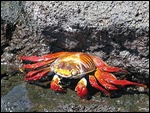
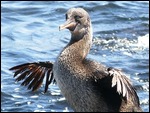
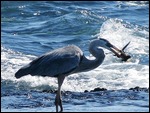
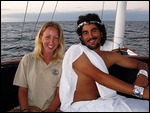
Dad
2010-07-03
Fascinating. Glad you picked the right boat!
vickicooper
2010-07-03
I was so lucky to get on that boat and with that guide... great timing and the fact they needed one more female passenger meant I had an unforgettable Galapagos experience.
vickismum
2010-07-25
WOW, a wildlife paradise it surely is, the fact that they needed one more female
passenger means it was meant to be. Neptune looks very nice!!!!!!!!
Fish and cloth sounds tasty. I will check out the videos and more photos on
facebook.
xxxxxxxxxxxxxx
vickicooper
2010-07-29
It must have been fate, and "Neptune" was the best guide I could've wished for.
Jacky Broomhead
2010-08-19
I love your description of Juan as "not unnatractive".
vickicooper
2010-08-19
And I love that of the thousands of words about all the amazing things we saw, you choose to comment on those two!